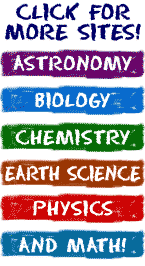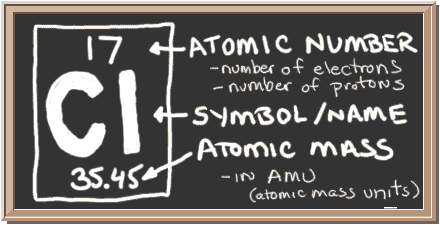
Check out the blackboard. That box on the left has all of the information you need to know about one element. It tells you the mass of one atom, how many pieces are inside, and where it should be placed on the periodic table.
In the next section we're going to cover electron orbitals or electron shells. This may be a new topic to some of you.
Electrons In The Shells
Take a look at the picture below. Each of those colored balls is an electron. In an atom, the electrons spin around the center, also called the nucleus. The electrons like to be in separate shells/orbitals. Shell number one can only hold 2 electrons, shell two can hold 8, and for the first eighteen elements shell three can hold a maximum of eight electrons. As you learn about elements with more than eighteen electrons you will find that shell three can hold more than eight. Once one shell is full, the next electron that is added has to move to the next shell.So... for the element of CHLORINE, you already know that the atomic number tells you the number of electrons. That means there are 17 electrons in a chlorine atom. Looking at the picture, you can see there are two electrons in shell one, eight in shell two, and seven in shell three.
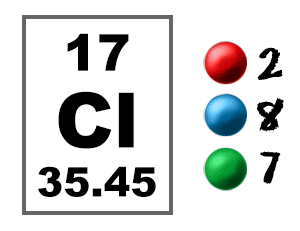
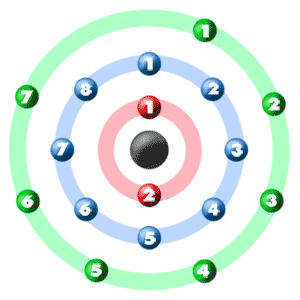
Examples of Compounds with Chlorine
Sodium ChlorideThis is sodium chloride, also known as table salt. Most people scientist know that the formula for salt is NaCl. One sodium (Na) atom gives it's electron to one chlorine (Cl) atom. Chlorine then has the eight electrons in its outer shell to make it "happy". Sodium is "happy" because it has now given up its one extra electron. |

|
|
|
|
||
Aluminum TrichlorideChlorine (Cl) can also bond with aluminum (Al). Aluminum has three extra electrons and will easily let the chlorine atoms use them. Because aluminum has three, that means three chlorine atoms can bond. They make the formula AlCl3, also known as aluminum trichloride. Each of the chlorine atoms gets an electron to fill its shell, and the aluminum loses three, giving it a filled shell too (remember, Aluminum has three extra electrons). The name trichloride means three chlorine atoms are involved. |
 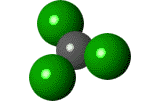
|
|
|
|
||
Nitrogen TrichlorideNitrogen can combine with three chlorine atoms, forming Nitrogen trichloride, or NCl3. Nitrogen shares its electrons with the chlorine atoms, so all of the atoms have their shells filled.Take a look at the dots around the atoms. All of them now have eight electrons, and a filled outer shell! |
 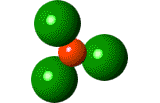
|
|




